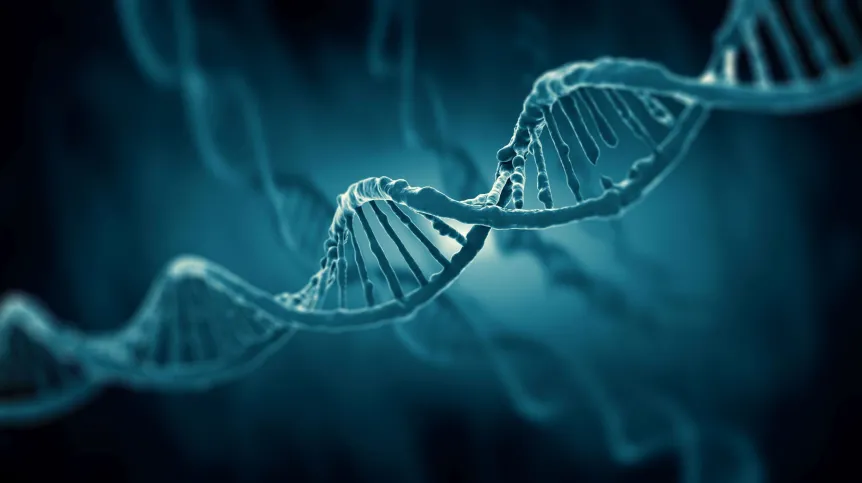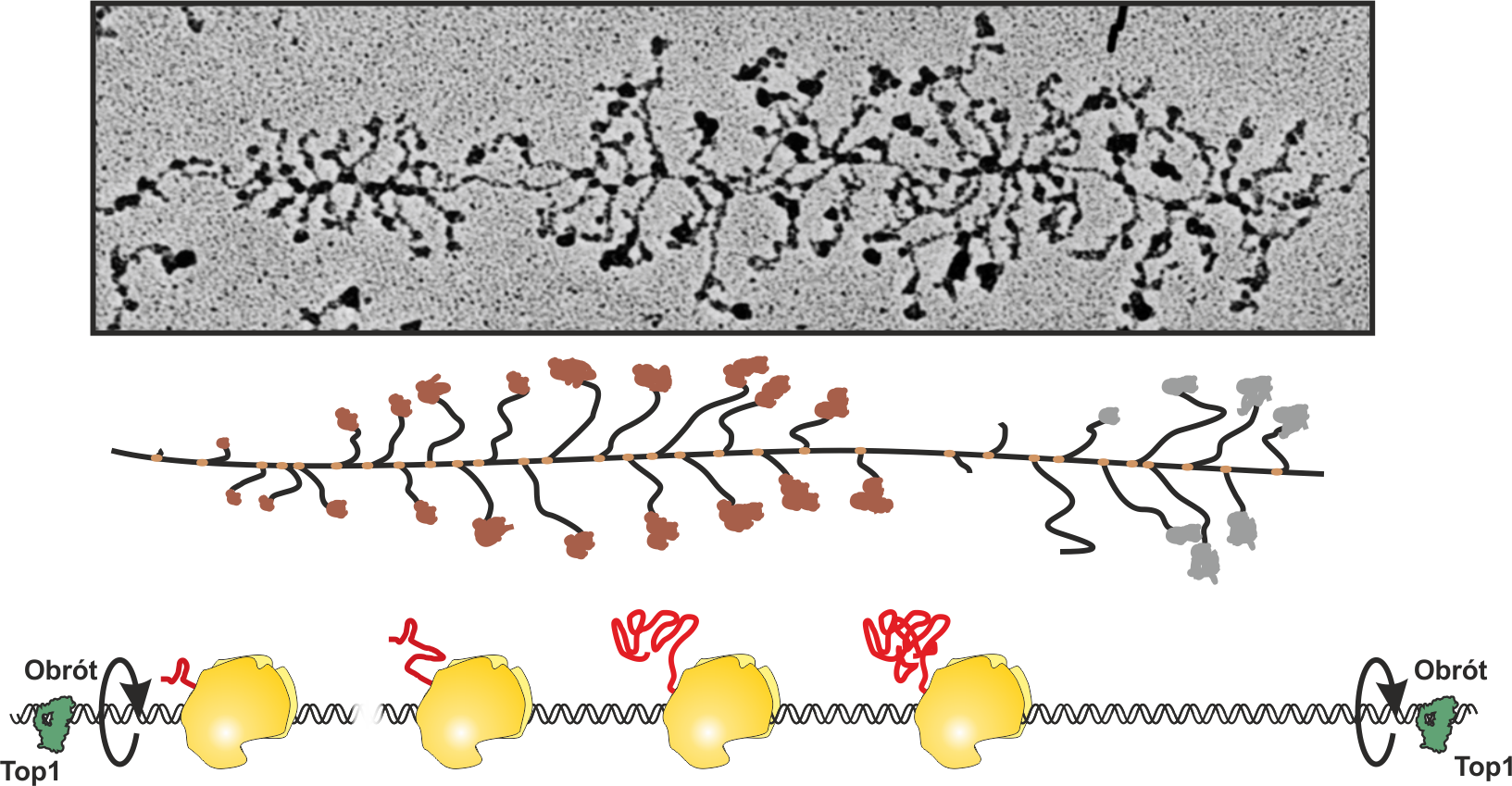
Does DNA in the nucleus of a cell hang motionless, while RNA molecules that transcribe genes spin around it? It turns out that it is the other way around! It is DNA that is in motion. This is the only way to prevent tangles in the nucleus of a cell, scientists from a Polish-British team argue.
DNA is like a long papyrus scroll with recipes for proteins and RNA. To extract information from it, you have to run it through a special 'reader' - RNA polymerase, which decodes the information and automatically spits out an increasingly longer, thread-thin receipt - RNA, i.e. instructions for protein production.
Until now, it was usually imagined that polymerases - motors that transcribe the content of genes into RNA - run along the static DNA. But there are several thousand such readers in the cell nucleus at any one time, and a very important gene can read even several dozen polymerases at a time.
But DNA - and we have known this since the times of Franklin, Watson and Crick - is a twisted double helix. So do the readers circle the DNA coil, dragging their own coils of bills that are even several thousand characters long? That would mean that every RNA that created in the cell would spin at a speed of 4 revolutions per second. It makes no sense!
Everyone who owns a bag of unused cables knows how easy it is for long thin objects to get tangled, and how much energy is needed to untangle it all... You just have to use your imagination to understand that the model with polymerases running around DNA makes no sense! Nature had to come up with something smarter.
Now, in light of new research published in “Cell Reports” we should update our idea of what happens in every living cell with a cell nucleus: 'Rotation is necessary in the process of gene expression. We show that DNA rotates, and this rotation is caused by molecular motors operating simultaneously, which perform transcription. It makes no sense for them to rotate', says Tomasz Turowski, PhD, head of the Laboratory of Transcription Mechanisms at the Institute of Biochemistry and Biophysics of the Polish Academy of Sciences.

Imagine a round clothes hanger in a shop: you can walk around it yourself. Or stand still and spin the hanger like a carousel so that all the clothes pass in front of you one by one. The latter strategy works exceptionally well when there are more people at the hanger, and they are also spinning it. Then, once the hanger is set in motion, it rotates and you do not have to push between the shelves, only coordinate the pace of browsing clothes with other people.
And it is precisely Polish-British research that provides evidence that DNA rotations result from the synchronization of polymerases. Tomasz Turowski explains that the rotation of the DNA strands connects the work of polymerases into an orderly convoy, which allows them to cooperate.
The anchor that holds RNA in place is the charge they produce. Models show that if this charge is cut off, DNA slows down its rotation. 'Traditionally, it was believed that the machines producing RNA, i.e. RNA polymerases, work independently, but the latest research reveals that their operation on rDNA genes is synchronized thanks to the phenomenon of coupling by DNA rotations. So we are showing a new way of thinking about genes', he describes.

When such a synchronized convoy is stopped, precise cutting of the newly formed RNA causes the polymerases to pause and retract, which is crucial for quality control of the produced molecules. Additionally, defective or blocked RNA fragments are marked with a short sequence, which allows them to be removed by the cell's repair systems.
Previously, it was believed that the processes of protein production and quality control occur one after the other. The new discovery shows that these processes can directly influence each other.
Ludwika Tomala (PAP)
Nauka w Polsce
lt/ bar/













